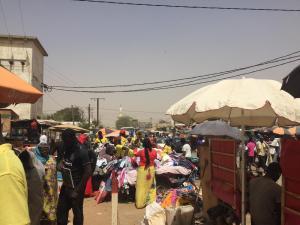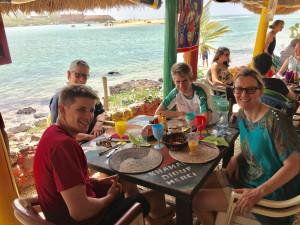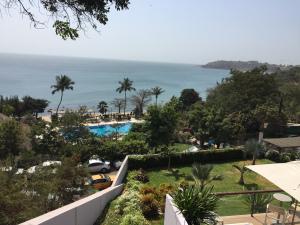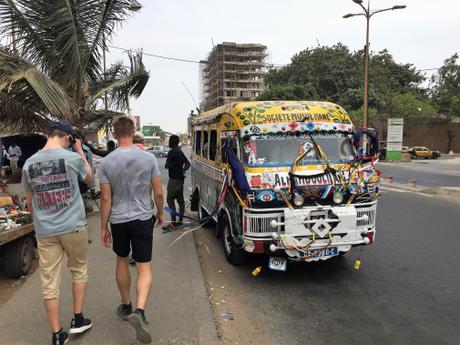 When is a travel post a geography lesson? This feels like a bit of both on my family’s recent trip to Senegal in west Africa, but if I only post lovely pictures and talk about touristy things it would give a false impression, not only of the little we saw of the country but also of the impression it made on me.
When is a travel post a geography lesson? This feels like a bit of both on my family’s recent trip to Senegal in west Africa, but if I only post lovely pictures and talk about touristy things it would give a false impression, not only of the little we saw of the country but also of the impression it made on me.
Part of this is down to our reason for going: to visit our eldest son R, 21, who’s spending the third year of his French and International Relations degree in the capital, Dakar. He lives a simple life in a typical central neighbourhood; getting by on a tiny allowance, he commutes to his teaching internship on the jam-packed car rapide (minibus) where he’s usually the only toubab (white person). Joining a local rugby team made up of locals and French ex-pats has given him a ready-made social life. It’s an incredible experience for a young man with his interests and we’re really proud of his openness and adaptability. His knowledge and personal take on Senegal added a unique dimension to the trip I took with his dad and younger brother.
Like most foreigners, I knew very little about Senegal – it’s certainly not a common destination and there are no direct flights from the UK. We flew Air Portugal via Lisbon, R has used Iberia via Madrid. We rented two fabulous properties on Airbnb, a flat in the Dakar neighbourhood of Virage (near the beach below ) and a villa close to the coastal resort of Saly.
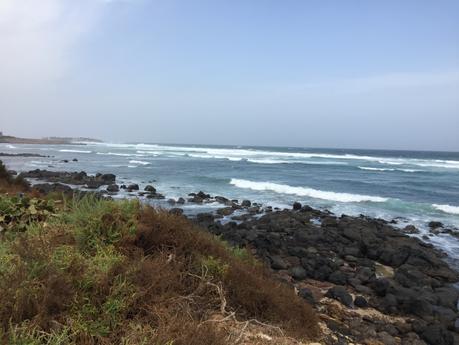
We have visited countries in various stages of development including different parts of South Africa, but Senegal bore little relation to anywhere we’d been before. I wasn’t aware that it’s one of the world’s 36 UN designated Least Developed Countries, and whilst it didn’t shock me the way India did at the age of 22 on my first trip outside Europe, it reminded me how easy it is to take the comforts of life in a developed country and basic amenities like electricity, clean/hot water and waste disposal systems for granted – the absence of the latter is sadly much in evidence. (We really need to do something about plastic on this planet.) There are however positive signs of economic and infrastructure development, often involving foreign investment.
Senegal gained independence from France in 1960 having been one of the colonies of French West Africa, and was previously under the Dutch, Portuguese and British due to its strategic location as the westernmost point of Africa (of which more shortly). The enduring influence of France is apparent in many aspects of Senegalese life: French is the official language and widely spoken alongside the lingua franca, Wolof. Conversely, English is barely spoken at all even in business hotels etc, which is a source of frustration for some travellers.
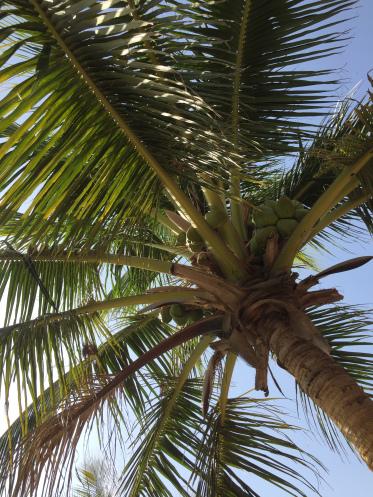
Dakar isn’t a gentle introduction – on a peninsula, it’s very spread out so it takes ages to get around by taxi (taxis are cheap, you bargain). Traffic is crarzy and the air quality isn’t the best due to wind, dust and exhaust fumes. We were constantly being told that Dakar is not a ville touristique, that’s clear, but it’s vibrant and interesting, which if you’ve made it here, is probably enough. In any case, there are compensations. The Senegalais have a philosophy of Téranga – hospitality and friendliness – towards anyone, including toubabs – I loved the way they greet and treat each other as friends even if they’ve never met before. I’ve never been anywhere we spent so much time talking to the people we met about their country and their lives, and this was one of the best parts for me.
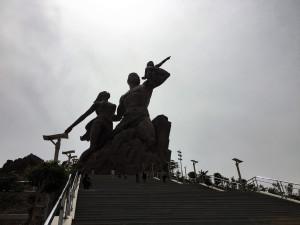
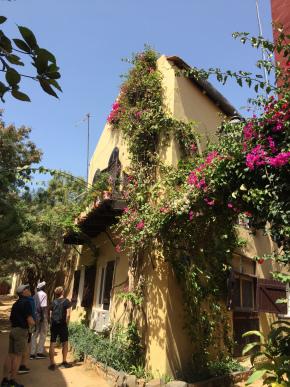
Although Dakar is clearly visible across the water, Gorée is another world with its perfectly kept lanes (there are no vehicles), coloured houses and lush vegetation. The sense of peace and serenity is completely at odds
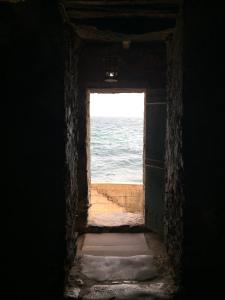
After the chaos of Dakar we were ready to move somewhere more laid back, heading to the main tourist region centred on the coastal resort of Saly less than two hours south of the capital where temperatures are reliably 35 C + all year . Our villa had the most stunning garden where we spent hours reading, swimming and relaxing to the sound of coconut trues clanking (they do!) and tropical birdsong. Saly feels slightly unreal – whilst it’s far less manicured than a European seaside resort, there are some clean beaches, plenty of great places to eat and drink, many of them French-owned and catering to a clientele mostly of retired French people. (I haven’t felt so young in a long time.) We did a few very local outings, one to the Somone lagoon, where we spent hours over lunch at a Rasta-themed beach place, enjoying the breeze and the view. After a few days here my husband and younger son had to return to London for work and school, but I stayed on for another five days with R, doing very little (except reading, of course) and going out in the evening. We talked about all kinds of things and it was lovely to have that time together in a year we’re seeing so little of each other.
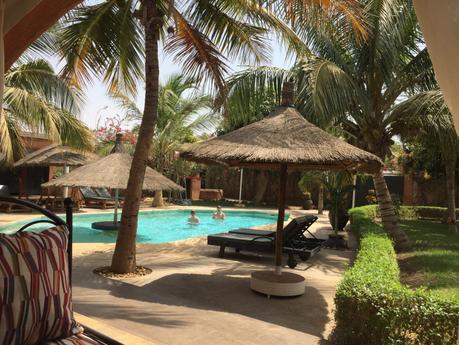
Senegal was a family reunion, a fun holiday and an eye-opener: like all good trips, it made me look at things from a new perspective, only more so. R told me that when he first learned the standard response to ‘How are you?’ in Wolof, maa ngi fi, he thought it might be related to magnifique in French. In fact, it means ‘I’m here’. That moved me, and wherever I am, I’m going to try to remember that.
See the PLACES tab for more travel pieces, including Northern Spain, Malaysia, Vietnam, West Coast USA, Western Cape (South Africa), eastern South Africa.
*POSTSCRIPT*
Next week the Sofa Spotlight guest author programme continues with a visit from Helen Kitson on Writing about Writers in her excellent debut novel The Last Words of Madeleine Anderson. Also, as I read so many (albeit not all) good books on my trip, I’ll also be posting a reading round-up sometime soon.
Advertisements
